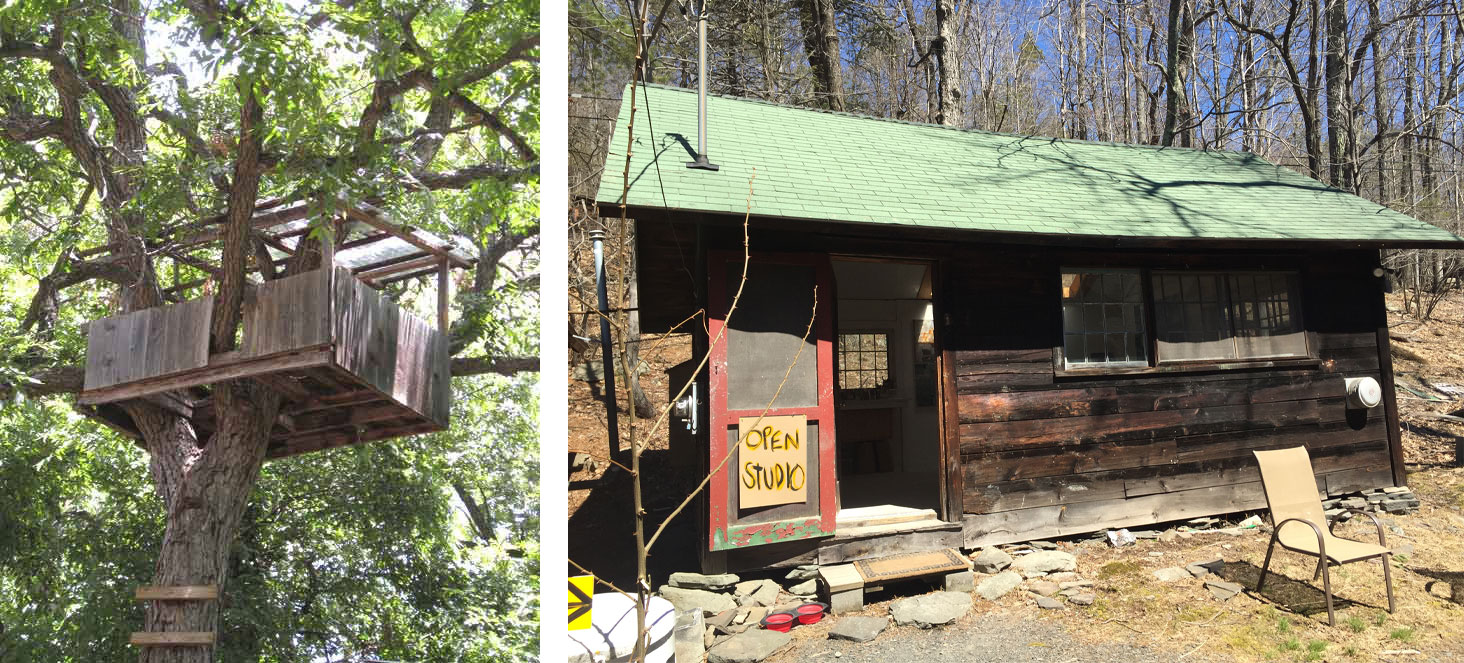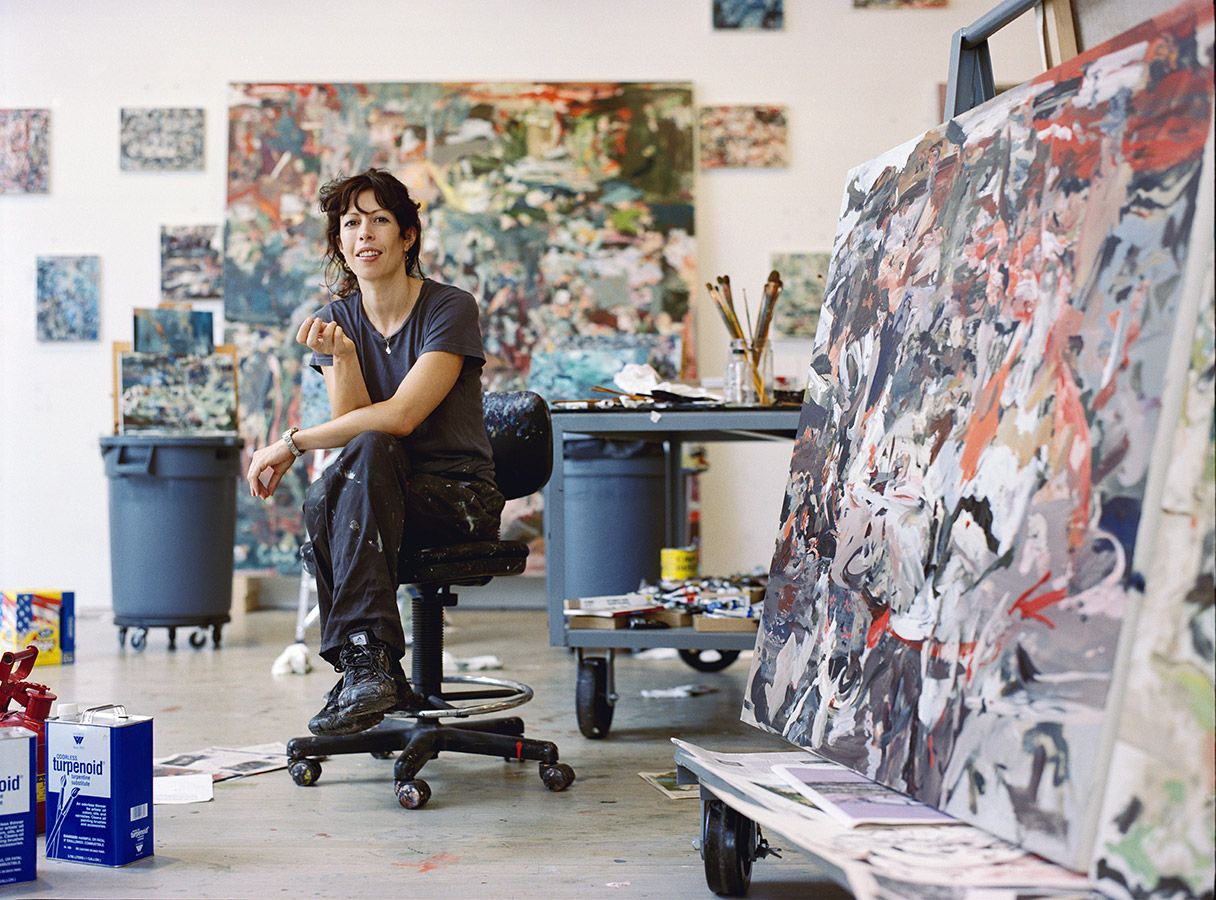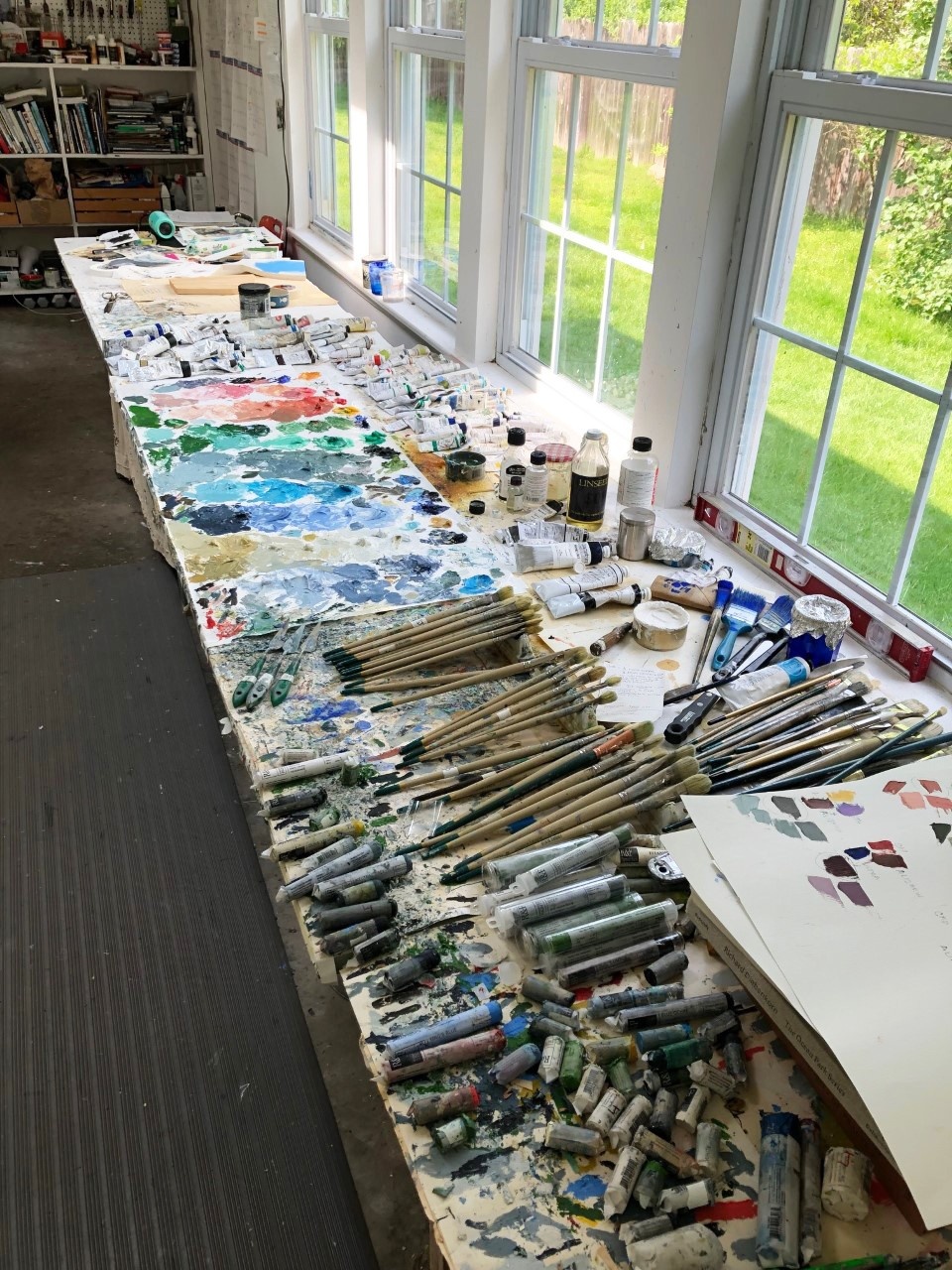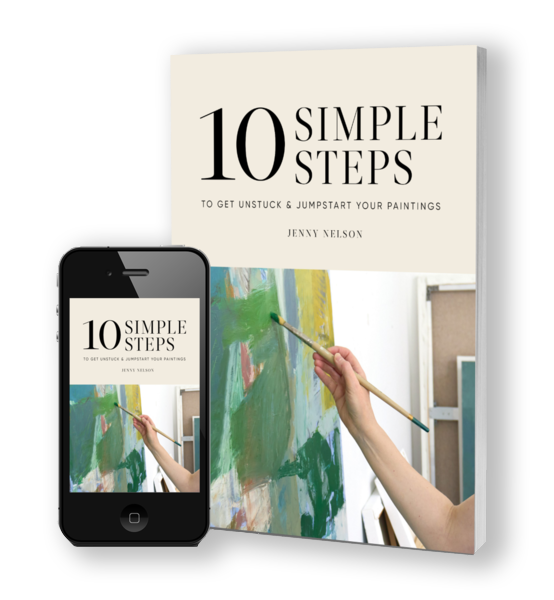
Creating A Space to Paint
I love the look on Lee Krasner's face in this iconic photo above. She's confident, defiant, and fully claims her space.
A painting studio could be at the kitchen table, in the spare bedroom, or in a beautifully designed space; but no matter where it is, designating a space to create your work is a declaration of your commitment to your craft. Before I had my present home studio, I had a mobile studio, meaning everything fit into a few milk crates and I could move at a moment's notice. All of my clamp lights, extension cords, tools and materials, could be broken down and set back up wherever I ended up. I've lived for over 30 years in a community with a rich artistic history. Any time I was in need of a studio, there was always a barn, attic, or extra room available for me to rent. It was hectic, but I was determined, and I made my studio space wherever I could.
A hundred years ago, the barn below was the first general store in our mountain valley, but later on it became a renowned local artist's studio. When he was no longer able to work, I was honored to paint in this rustic, locally historic space. It was freezing in the winter, and didn't have much natural light, but at the time, the vibe and the price was right.

When I think about the feeling of peace and dominion I have in my studio, I am reminded of the fort houses I had in my childhood that were very important spaces for me. They were a pre-curser to the artist studios I would have later in life. A place where I was the ruler of my domain and could create any world I desired, no matter how far out or imaginary.

There are so many layers to the painting studio. First, the technical things, like organizing your tables, tools and materials. Then the steadfast decision to show up and get to work. And once you've arrived, setting your mind into 'explore' mode. Next, sinking into the roller coaster of the creative process, whatever that means for you.
I keep a wonderful book in my studio called Inside The Painter's Studio, by Joe Fig. It's organized in a question and answer format. Joe asks the same studio questions to 24 established artists. This simple approach allows the reader a kind of personal studio visit with a group of fantastic artists with a wide range of painting practices. Hearing everyone's unique experience confirms that a studio practice is highly individual. There is no right or wrong way to do it. Here are some of the questions artists were asked:
How often do you clean your studio?
Do you work on one painting or several at a time?
When you are contemplating your work, where do you stand of sit?
Did your studio set up evolve organically or did you have a plan for the layout?
One question that stood out to me is, Tell me about your studio tables. How long have you had them, and how did you decide to set them up? Here is how Gregory Amenoff answered that question:
"...I like to work in a slot where I'm in a space between two tables. On one side (the left) I keep the brushes and the cups-and I work with cups, I don't use a palette, I mix paint in cups, and I have for years, and the solvents to clean the brushes and any tools that I use, such as scrapers and palette knives. And on the other side (the right) I keep all the paint and mediums. So I move back and forth between the two, grabbing brushes, cleaning brushes, and moving from one side to the other. I stay in motion that way, and I have to pass by the painting every time I do that. So I'm really set up that way, I've always had two tables...and then I use the wall. The wall is very important to test colors and to wipe off the colors I don't like. The wall becomes a sight of activity, so all the walls I've ever had become these incredibly corroded, bumpy barnacled, surfaces..."

Another interesting question from the book is, Are there any specific items in your studio that have significant meaning to you?
I have a unique, sentimental tool in my studio. The antique hammer pictured above. My father gave it to me when I was about seven, when we were working side by side in his wood shop. I had a small table next to his, and this hammer embodies the trust and confidence my father had in me to use tools and to build things. Whenever I am preparing for a show, I make sure to use this hammer when I am wiring up my paintings, it evokes my dad's spirt and makes him a part of every exhibition.

Cecily Brown in her studio
What happens when you step into your studio space? Is there is a shift in your thinking and disposition, a sense of purpose?
I find beginning a new piece kind of excruciating. It's when I really procrastinate. Working abstractly, I know I'm entering into a relationship where I am going to feel lost most of the time. That's uncomfortable. And, it's a discomfort I know well. When I begin a painting with a chaotic nest of marks and lines and then it transforms into something more organized, and somehow deeply familiar, it sometimes makes me laugh to think of the hours I've spent trying to achieve the right marks for the job. What a privilege this is. Hours pecking and erasing, measuring and weighing every dash, dot and smudged edge. This is a natural and meaningful activity to me, but it is not the norm, most people don't spend their days obsessing about a line. But if you do spend your days obsessing about a line, then you must have the space and time to do so. A tree fort, a painting studio, a place of unlimited possibilities.

Inside my studio today
Join my monthly newsletter and never miss a post
Each month I share explorations of master artists' works, elements of abstraction, and behind-the-scenes of my own painting journey, delivered to your inbox.

